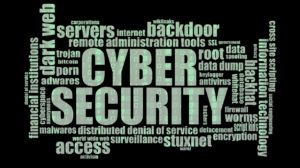In today’s interconnected business landscape, companies rely on many third-party vendors, suppliers, and partners to streamline their operations and achieve efficiency. While this approach offers numerous benefits, it also exposes businesses to significant risks. Beyond the realm of cybersecurity, where companies invest heavily in protecting their digital assets, lies another pressing concern – third-party risk management. This blog will explore third-party risk management and why it is crucial for modern businesses.
The Expanding Third-Party Ecosystem
Before we dive into the intricacies of third-party risk management, let’s first understand the scope of the issue. Over the past few decades, businesses have increasingly relied on third-party relationships. These relationships can encompass various activities, including outsourcing, procurement, and collaborative partnerships.
For example, a retail giant may rely on third-party logistics providers to handle its supply chain operations. A software company might partner with a third-party development team to accelerate product development. Even seemingly non-technical aspects, like office cleaning or catering services, can involve third-party vendors. All these relationships create a vast and complex third-party ecosystem.
The Importance of Managed Third-Party Risk
As businesses expand their networks of third-party relationships, they also expand their exposure to various risks. These risks can come in multiple forms: financial, operational, compliance, reputational, and even legal. Managed third-party risk becomes a critical component of overall risk management strategies.
Financial Risk
Third-party vendors’ financial health and stability can significantly impact your business. A vendor’s financial troubles can disrupt your supply chain, lead to project delays, or even result in contract disputes. According to a 2022 report by the Global Risk Institute, 43% of businesses surveyed experienced disruptions in their supply chain due to financial problems with third-party vendors in the past year. By managing third-party financial risk, you can identify potential issues before they escalate.
Operational Risk
Third-party partners play a vital role in your day-to-day operations. Any operational issues on their end can ripple through your organization. A logistics provider’s failure to deliver goods on time or a technology vendor’s system outage can disrupt your business. Effective risk management helps you anticipate and mitigate these operational disruptions.
Compliance Risk
Regulations and compliance requirements are continually evolving. When you engage with third parties, you share compliance responsibilities. Failure to ensure that your vendors adhere to relevant regulations can result in penalties and damage your reputation. Managed third-party risk includes compliance monitoring to reduce these risks.
Reputational Risk
The reputation of your business is a valuable asset. Any unethical or irresponsible behavior by a third-party vendor can tarnish your image. You can protect your brand’s reputation by carefully selecting and monitoring your partners.
Legal Risk
Contracts and legal agreements are essential components of third-party relationships. Inadequate contract management can expose your business to legal disputes and liabilities. Managed third-party risk includes robust contract management to mitigate legal risks.
The Process of Third-Party Risk Management
Effectively managed third-party risk program involves a systematic approach:
Identification
Begin by identifying all third-party relationships within your organization. This involves cataloging vendors, suppliers, contractors, and any other external entities you engage with.
Assessment
Evaluate the risks associated with each third-party relationship. This assessment should include financial health checks, compliance reviews, and operational risk assessments.
Risk Mitigation
Develop strategies to mitigate identified risks. This may involve renegotiating contracts, diversifying vendors, or setting up contingency plans.
Monitoring
Continuously monitor your third-party relationships to ensure ongoing compliance and performance. This includes regular audits and performance reviews.
Response and Recovery
Have a plan for responding to and recovering from third-party-related incidents. This might involve invoking contingency plans, legal action, or sourcing alternative vendors.
Documentation
Maintain thorough records of all third-party relationships, assessments, and risk mitigation efforts. This documentation is crucial for compliance and future reference.
The Benefits of Effective Third-Party Risk Management
Implementing a robust third-party risk management program offers several advantages to your business:
Risk Reduction
By proactively identifying and mitigating risks, you reduce the likelihood of disruptions to your operations and financial stability.
Cost Savings
Efficient risk management can lead to cost savings in the long run. For instance, renegotiating contracts with better terms or diversifying vendors can lower costs.
Reputation Protection
Protecting your reputation is invaluable. Effective risk management helps maintain your brand’s integrity in the eyes of customers and stakeholders.
Legal Compliance
Meeting legal and regulatory requirements is essential for avoiding costly penalties and legal disputes.
Competitive Advantage
Demonstrating third-party solid risk management practices can give your business a competitive edge. Many customers and partners prefer working with organizations that take risk seriously.
Resilience
A well-managed third-party ecosystem enhances your business’s ability to weather unforeseen challenges, such as economic downturns or global crises.
Conclusion
As businesses expand their third-party relationships, the importance of managed third-party risk cannot be overstated. Beyond cybersecurity concerns, companies must proactively identify, assess, and mitigate the myriad risks associated with their third-party partners. Organizations can protect their financial stability, reputation, and overall operational integrity by adopting a comprehensive third-party risk management approach. In today’s complex business landscape, it’s not enough to secure your fortress; you must also fortify the walls of your extended ecosystem.





